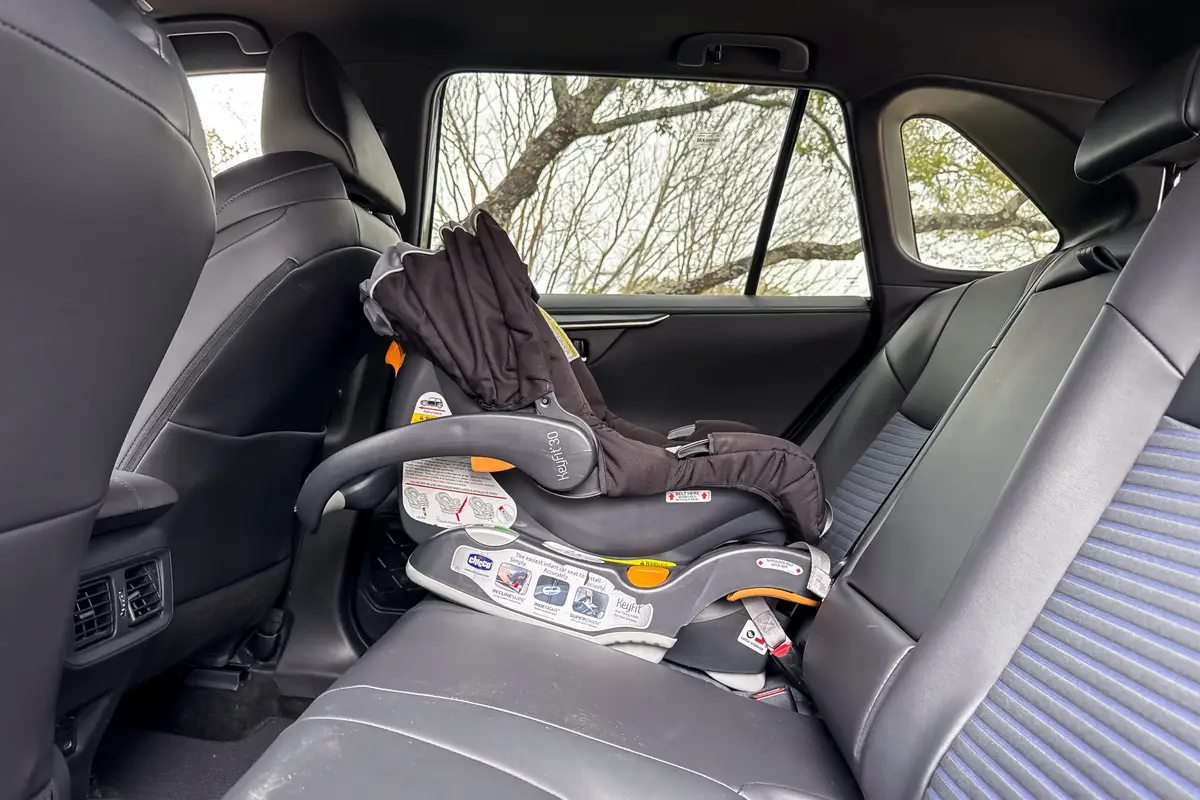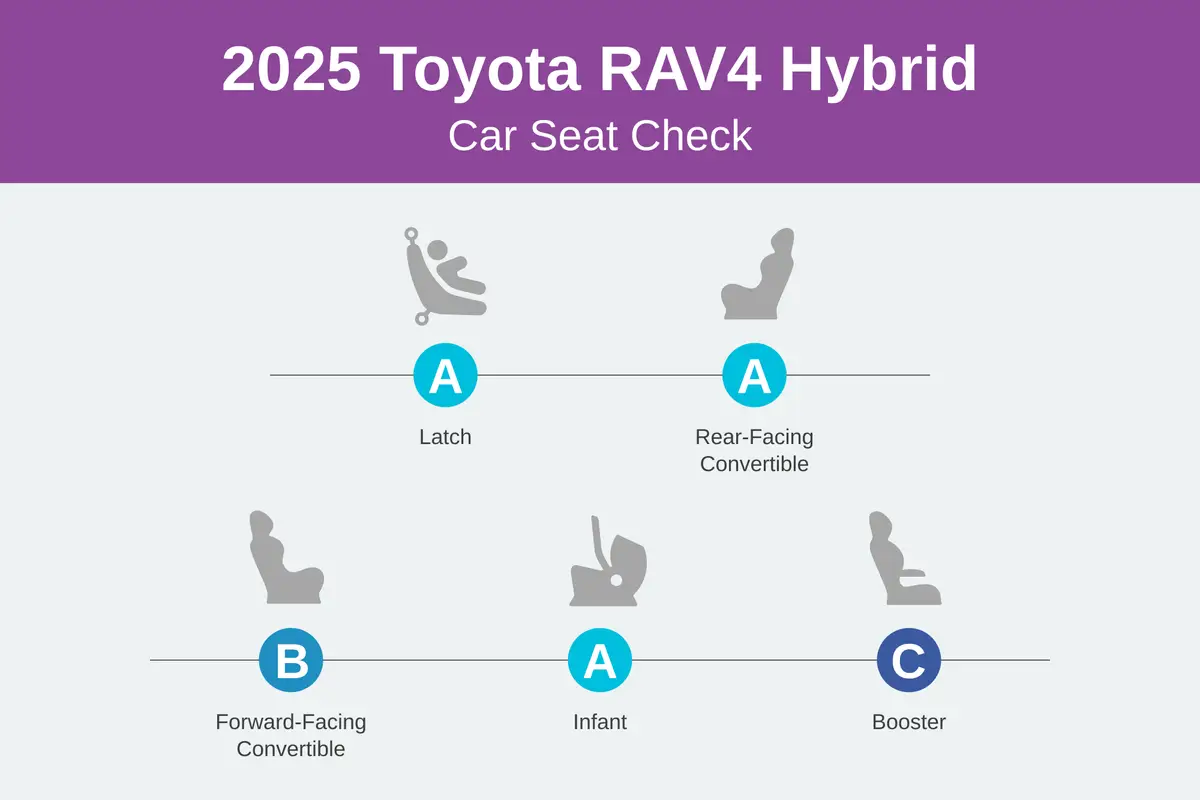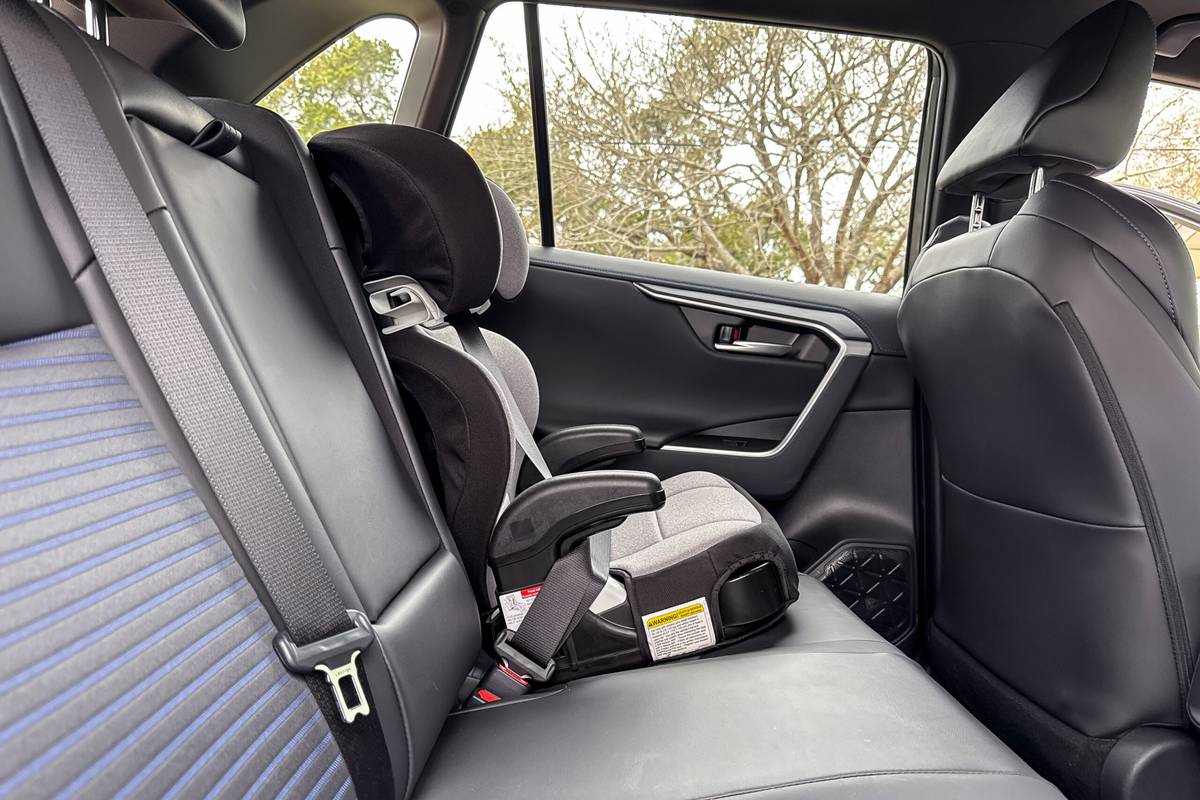How Do Car Seats Fit in a 2025 Toyota RAV4 Hybrid?


The verdict: Toyota’s compact RAV4 SUV comes in a couple of flavors for the 2025 model year: gas, hybrid and plug-in hybrid. For this Car Seat Check, we tested a hybrid version, and many car seats earned high grades thanks to ample legroom and visible lower anchors, but our booster earned a lower grade.
Does it fit three car seats? No.
Take a look at how the Latch system and each car seat scored below in our Car Seat Check of the 2025 Toyota RAV4 Hybrid.
Related: Search Car Seat Checks

Latch: Grade A
The two sets of lower anchors are visible for easy connection. Three top tether anchors sit midway down the seatback; they’re clearly marked but buried in the carpet, so you need to dig around to connect.
Infant Seat: Grade A
The infant seat was easy to install using the lower anchors, and the 5-foot-6-inch front passenger had a comfortable amount of legroom after we moved the front seat up about an inch.
Rear-Facing Convertible: Grade A
Again, installation was easy, and the front passenger fit well ahead of the seat after moving the front seat up a little bit.
Forward-Facing Convertible: Grade B
Connecting to the lower anchors wasn’t a problem, and the seat fit well; the head restraint can be removed to situate the forward convertible flush against the seatback. Connecting to the top tether anchor was a bit more difficult, however, since the anchor is buried in the seatback carpet.
Booster Seat: Grade C
Removing the head restraint helped us get a good fit with the booster, but the RAV4’s seat cushion bolstering pushed the booster on top of the buckle, complicating access. Also, the SUV’s low buckles could be tough for kids to grasp and use independently.

Grading Scale
A: Plenty of room for the car seat and the child; doesn’t impact driver or front-passenger legroom. Easy to find and connect to Latch and tether anchors. No fit issues involving head restraint or seat contouring. Easy access to the third row.
B: One room, fit or connection issue. Some problems accessing the third row when available.
C: Marginal room plus one fit or connection issue. Difficult to access the third row when available.
D: Insufficient room, plus multiple fit or connection issues.
F: Does not fit or is unsafe.
About Cars.com’s Car Seat Checks
Editors Jennifer Geiger and Jennifer Newman are certified child safety seat installation technicians.
For the Car Seat Check, we use a Chicco KeyFit 30 infant-safety seat, a Graco Contender 65 convertible seat and Graco TurboBooster seat. The front seats are adjusted for a 6-foot driver and a shorter passenger. The three child seats are installed in the second row. The booster seat sits behind the driver’s seat, and the infant and convertible seats are installed behind the front passenger seat.
We also install the forward-facing convertible in the second row’s middle seat with the booster and infant seat in the outboard seats to see if three car seats will fit; a child sitting in the booster seat must be able to reach the seat belt buckle. If there’s a third row, we install the booster seat and a forward-facing convertible. Learn more about how we conduct our Car Seat Checks.
Parents should also remember that they can use the Latch system or a seat belt to install a car seat, and that Latch anchors have a weight limit of 65 pounds, including the weight of the child and the weight of the seat itself.
Cars.com’s Editorial department is your source for automotive news and reviews. In line with Cars.com’s long-standing ethics policy, editors and reviewers don’t accept gifts or free trips from automakers. The Editorial department is independent of Cars.com’s advertising, sales and sponsored content departments.

News Editor Jennifer Geiger joined the automotive industry in 2003, much to the delight of her Corvette-obsessed dad. Jennifer is an expert reviewer, certified car-seat technician and mom of three. She wears a lot of hats — many of them while driving a minivan.
Featured stories



